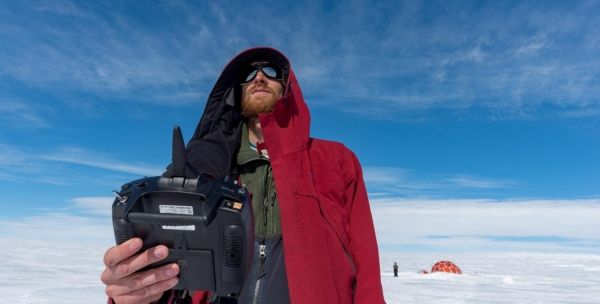Holes that carry surface meltwater to the base of the Greenland ice sheet, called moulins, are much larger than previously thought, according to a new study based on observation and first-hand exploration by a team including a geologist from the University of Arkansas.
The extra volume could influence the stability of the Greenland ice sheet and how quickly it slides toward the sea.
The team studied the relationship between the size of the moulins and the daily variation of water depth in them during the summer melt season. Scientists believe increased water depth, and therefore pressure, inside moulins lubricates the base of the ice sheet and increases the speed of its movement toward the sea, the way an ice cube slides easily on a thin film of water. But until now, little was known about the actual size of moulins and how much water they can hold.
Read more at: University of Arkansas
University of Arkansas geosciences associate professor Matt Covington flies a drone on the Greenland ice sheet. (Photo Credit: Jason Gulley)


